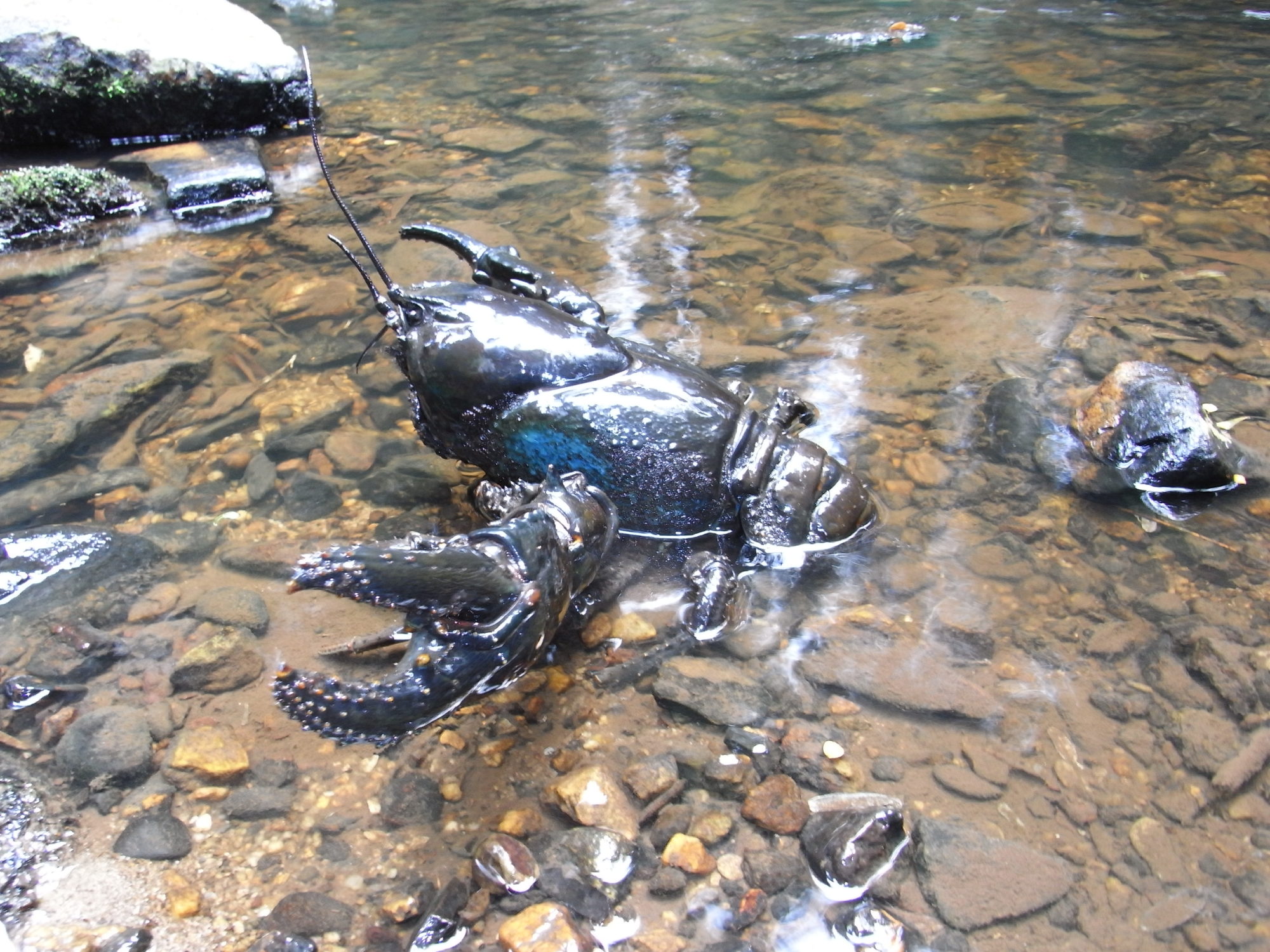The Recovery Plan for the Giant Freshwater Crayfish (Astacopsis gouldi) makes it clear that holistic catchment-wide approaches are needed. Protecting the habitat of giant freshwater crayfish in the headwaters of rivers will critically depend on how Tasmania’s forests are managed in the future. For example, extending protected stream-side buffer zones in logging areas and modifying burn off and clear felling practices to reduce sediment runoff. These recovery measures will be driven by how committed governments and the timber industry are to the recovery plan. In the lower reaches of the river catchments the recovery plan focuses on protecting and restoring habitat on private land. Eliminating illegal fishing is essential, but will need a lot more in terms of law enforcement, public education and cultural change.
Here is a full list the recovery strategies and criteria for success or failure, as stated in the Recovery Plan for the Giant Freshwater Crayfish (Astacopsis gouldi):
Recovery strategies:
The strategies to achieve the plans’ objectives are to:
- Conduct population trend monitoring and research to assess the current status of the species and evaluate the effectiveness of recovery actions.
- Mitigate key threats impacting upon giant freshwater crayfish habitat.
- Increase the reservation status and improve the quality of identified key locations for the giant freshwater crayfish.
- Reduce the pressures of illegal fishing on the giant freshwater crayfish.
Criteria for success: This recovery plan will be deemed successful if, within 10 years, all the following have been achieved:
- Population densities are increasing and have a healthy demographic structure.
- Key locations are identified and monitored annually, and population trends are assessed.
- Illegal fishing has been reduced to a point that it no longer threatens the species’ survival.
- Appropriate measures have been put in place to manage key threats affecting habitat.
- Habitat quality has been maintained or improved in key locations.
- Reservation status has been improved, or habitat protections increased, in key locations.
- Community awareness of, and participation in, giant freshwater crayfish conservation has increased.
Criteria for failure: This recovery plan will be deemed to have failed if; within 10 years any of the following have occurred:
- Regular monitoring has not been conducted and population trends have not been assessed.
- The species has become locally extinct from key locations in the wild, or populations at these locations do not display a healthy demographic structure.
- Recruitment of juveniles has not been recorded, and a healthy demographic structure is lacking, at locations identified as key to the survival of the giant freshwater crayfish.
- Illegal fishing pressure has not been reduced across the species’ range.
Actions have not been undertaken to address key threats limiting population growth and recovery. - Habitat quality has declined in key locations.
